

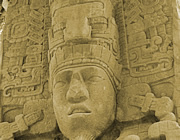
The Mayan carvings of Quirigua are some of the most intricate to survive in such good condition, telling the story of King K'ak Tiliw and the rise and fall of this Mayan city.
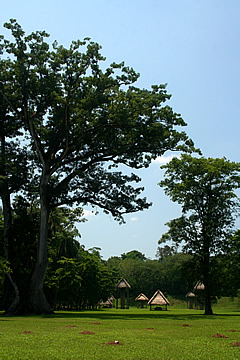
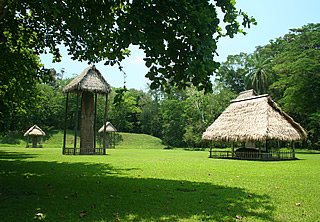
Though Quiriguá does contain the remains of buildings and even a ball court, its justified claim to fame are the intricately carved stelae and zoomorphs. These are each protected by a neat thatched roof and lie in a peaceful grassy setting.
The stelae tell some of the history of Quiriguá which from the second century AD was an important trading post between the mighty settlements of Tikal and Copan. Each stela has a deep carving of a ruler and glyphs recounting important dates and events.
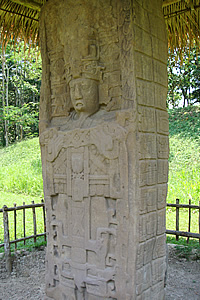
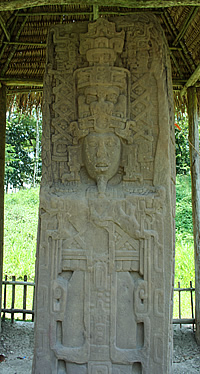
The peak of Quiriguá was in the eighth century AD after K'ak' Tiliw, also known as "Cauac Sky", was appointed ruler by 18 Rabbit of Copan in 725AD. The extent of K'ak' Tiliw's ambition can be gauged from his attack on Copan in 738 when 18 Rabbit was captured, brought to Quiriguá and beheaded in the plaza. Human blood was a much prized sacrifice to the gods, and royal blood would be the best.
From this point Quiriguá was independent of Copan and Tikal, probably with the military support of Calakmul. K'ak' Tiliw died in 785. From 751 to 806, when the city state was at its height, a new monument was erected every five years. K'ak Tiliw created the Great Plaza and most of the carved stones here date from his reign.
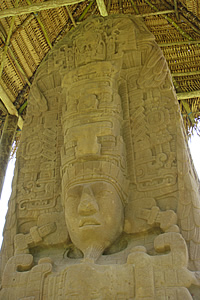
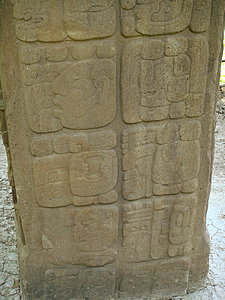
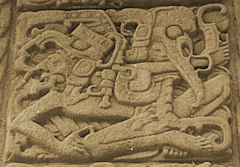
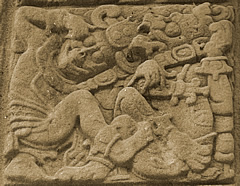

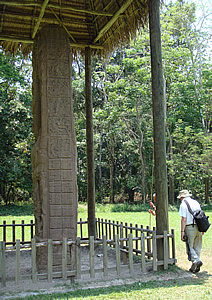
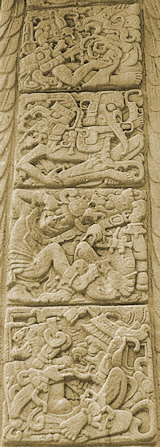
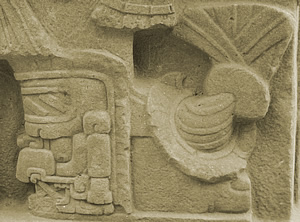
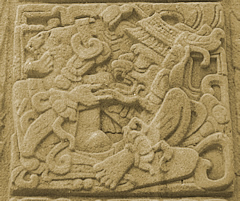
Mario explained the significance of the carvings, who they represented and what particular event might be commemorated. The first three stelae we came to were A, C and D, all showing King K'ak Tiliw. Each has date hieroglyphs on the lower half of the two east and west sides. Stela D has particularly magnificent deeply incised carving.
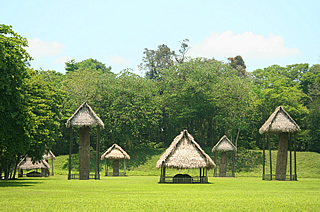
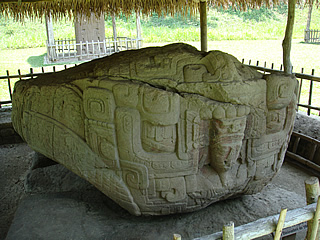
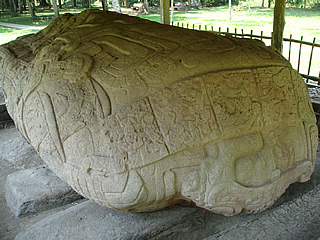
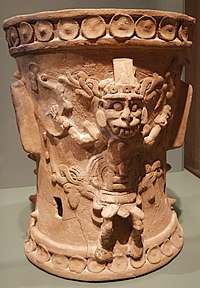
Mario also explained the complex Mayan calendar and how Mayan hieroglyphs depict dates. I consulted Sacred Texts and Mayan Calendar Description for additional information on the details of the Mayan calendar as it was difficult to make notes at the time.
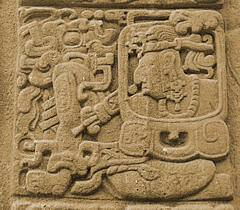
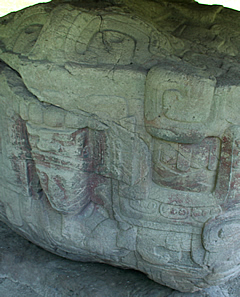
A base of 20 is important in the system which is, on its most fundamental level, composed of three calendars: the Long Count of 20 baktuns each of about 144,000 days; Haab which is a civil calendar with a year of 360 days and eighteen "months" of 20 days with an extra short month of five days added at the end of the cycle; and the Tzolkin ceremonial calendar which had a cycle of 260 days - 20 periods of 13 days.
The Long Count is cyclical and a new cycle began on 21st December 2012. A baktun is sub-divided into 20 katuns, a katun has 20 tun, a tun has 18 uinal (360 days, the same as a Haab year), a uinal is 20 kin or days (the same as a Haab month).
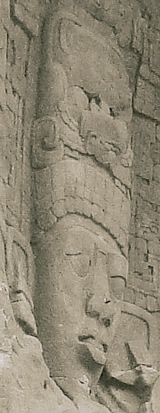
Zoomorphs are quite different to Stelae being large oval stones carved in animalistic shapes such as toads and snakes and identified as altars. These are particularly intriguing, especially those which show the birth or death of a ruler respectively emerging from the mouth of, or being swallowed by, the earth monster.
Zoomorph B, near Stelae A, C and D, was dedicated in 780 by K'ak' Tiliw. It is over 4m long and must weigh tons. It shows K'ak Tiliw emerging from the mouth of a reptilian Earth Monster, a birth analogy.
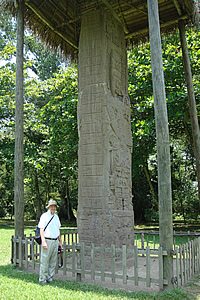
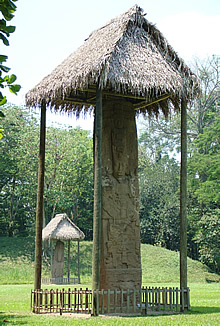
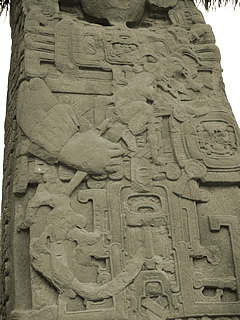
To the east of Zoomorph B are two enormous Stelae - E and F. Stela E is the tallest carved Mayan stone known, at about 10.7m high, 3m of which are buried, and weighing an estimated 65 tons. It was dedicated in 771 by K'ak' Tiliw.
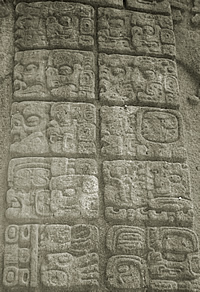
Stela F is another big one at around 7.3m high and dates from 761. Both these enormous stelae bear portraits of K'ak Tiliw. Though smaller than E, Stela F has some really impressive carving, showing K'ak Tiliw holding his hands to his shoulders on the south face and holding a sceptre on the north face, in both portraits wearing a magnificent headdress.
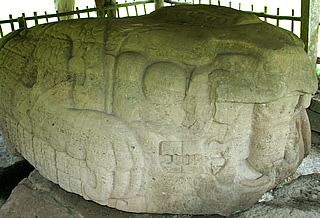
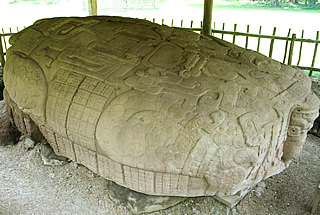
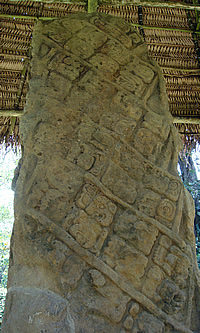
Nearby is Zoomorph G dating from the year of K'ak Tiliw's death in 785. It again represents some kind of monster, very cat-like with fine claws and curved lower incisors! It has a human head at both ends.
Further south Stela H is quite different to the ones we've seen up to now. It dates from early in K'ak Tiliw's reign, 751, and the portrait faces west. K'ak Tiliw holds a horizontal bar, also known as a Serpent Bar; a demon or god emerges from the ends of the bar on the north and south faces. The hieroglyphs on the east face are arranged in unusual double diagonal lines.
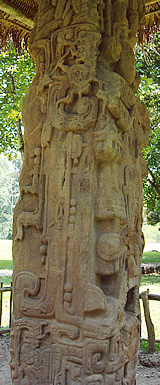
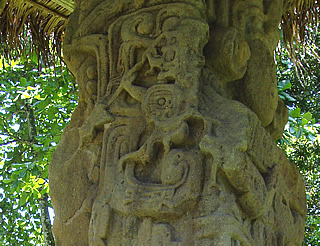
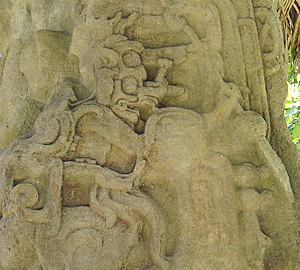
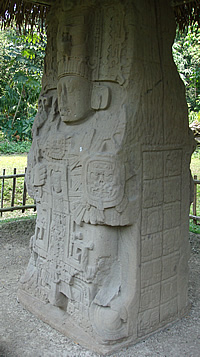
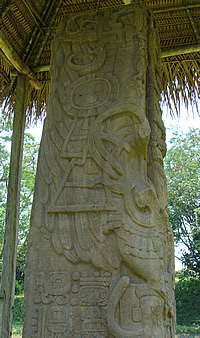
Stelae J and K stand on the southern extremity of the Great Court - Stela J details the capture and beheading of 18 Rabbit of Copan. Stela K, dating from 805, was the last monument to be erected at Quirigua and shows the grandson of K'ak Tiliw who was ruler at that time and is known as "Jade Sky".
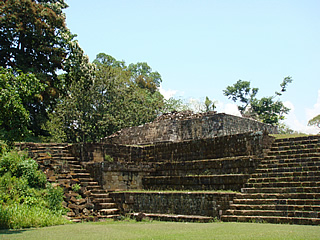
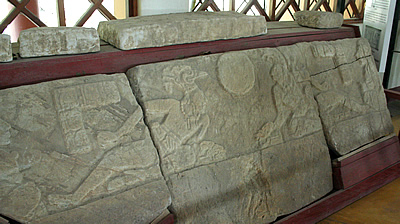
South of the Great Court the ball court was located surrounded by the remains of monumental buildings in the so-called Acropolis area of the site. There's not much to see of the ball court, the walls being covered with mounds of earth, but steep, deep steps facing it suggest spectators may have stood on the surrounding buildings to view the game.
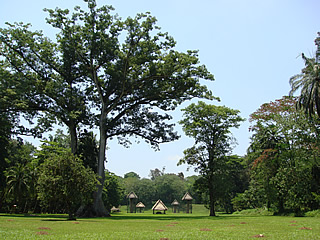
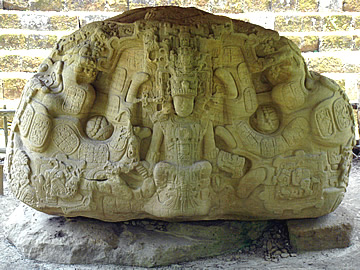
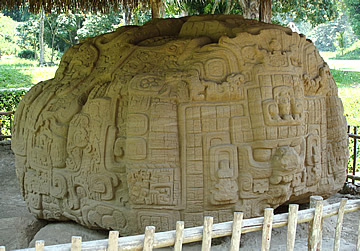
Here can be found a magificent zoomorph nicknamed "The Great Turtle" by the explorer Maudsley (a wonderful collection of his photographs and drawings can be found on the Mesoweb website). It dates from 795 when K'ak Tiliw's son "Sky Xul" was ruler. It is intricately carved on all faces and in excellent condition.
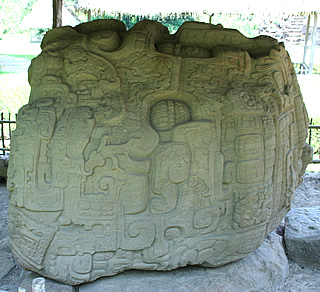
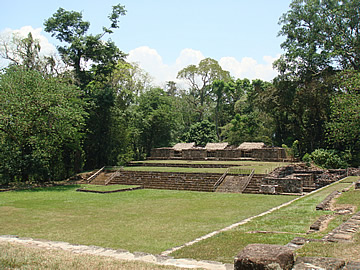
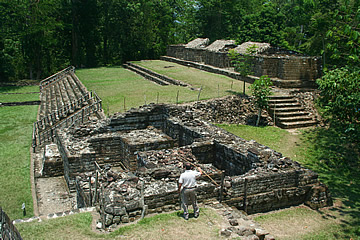
From Quirigua Mario took us to meet our new guide who would be showing us Tikal. We were really sorry to say goodbye to Mario - truly a "Number One" guide.
